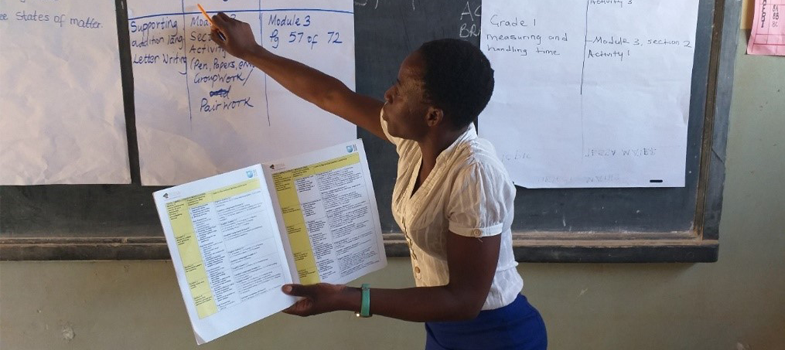Training guide
5. Reflection
5.1. Reflecting on teaching
It’s useful to keep a record of when you tried each approach. The next step in becoming a reflective teacher is to think about what worked well or what did not in your classrooms. Do you remember the questions from course 1 that can help you build your own skills in reflection? Here’s a quick recap:
- Which activities worked well in my lesson? Why?
- Which activities did not work as well as I planned? Why? What can I do to improve this next time?
- Did I have all the materials I needed? What else would have been useful?
- Which learners worked/participated well in the lesson? Why?
- Which learners found the activities difficult? What can I do to help them?
- What do I need to remember next time when I am planning a similar lesson?
Do you notice how questions 1, 2 & 4 are all followed by one word: ‘Why?’ and that some of the questions focus on the learners? Noticing how learners are reacting to the lesson is an important part of being reflective.
When you are reflecting on a lesson or series of lessons it is important to move on from describing what you have done to analysing why it was successful or not.
Admitting that something did not go as well as you hoped, is not a sign of weakness. Rather it is a strength, because it is through being analytical and honest that you will improve as a teacher.
Activity 4.10: Reflecting on teachingTake a look at these two examples of teachers’ reflections. Which do you think is the better reflection? Why? Example 1 We had a pair work review in the TGM and each teacher discussed something on pair work on the successes and challenges faced during pair work activities. It was discovered that nearly every teacher appreciated the approach and it worked well because every learner was involved, but it can be time-consuming. Example 2 In my English lesson on things that are found in the classroom, I divided students into pairs to practise ‘what is this’ and ‘this is a…’ and the words for objects in the room. I faced challenges because I forgot to demonstrate in the first place how the practical work should be done. I realised some learners did not know what to do. I gave some instructions desk-by-desk, but those I did not get to became restless. I think it would have worked well if I gave clearer instructions and perhaps encouraged pairs to help each other. What do you see in Example 2 that is not in Example 1? What would you want to ask the teacher who wrote the reflections in Example 1? |
|
Did you notice...
|
Here is an example reflection from a teacher’s notebook in the Central Province.

Look at how the teacher divides the reflection into different sections:
- Title
- Strengths
- Weaknesses
- Way forward
When you are writing your reflections on a particular lesson or part of a lesson in your Notebook, think about following a similar structure. Writing down the strengths and weaknesses of a lesson/activity will help you come up with a plan to move forward, as this teacher has.
